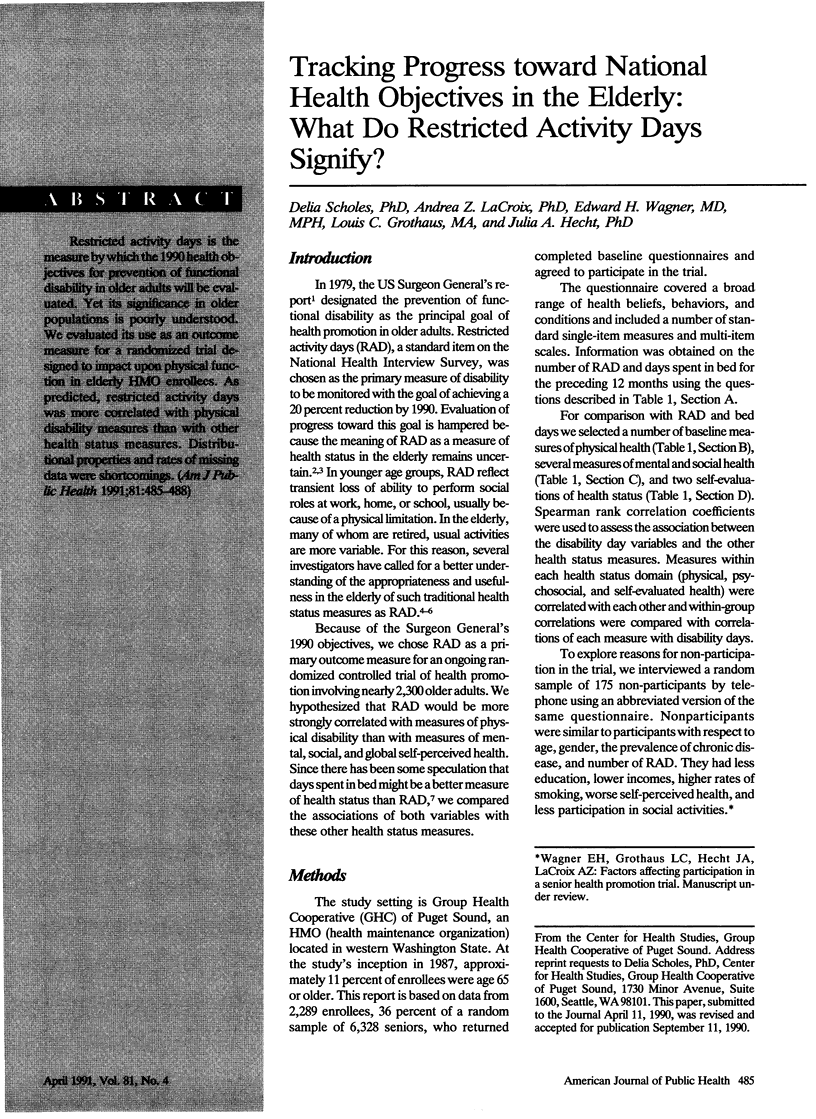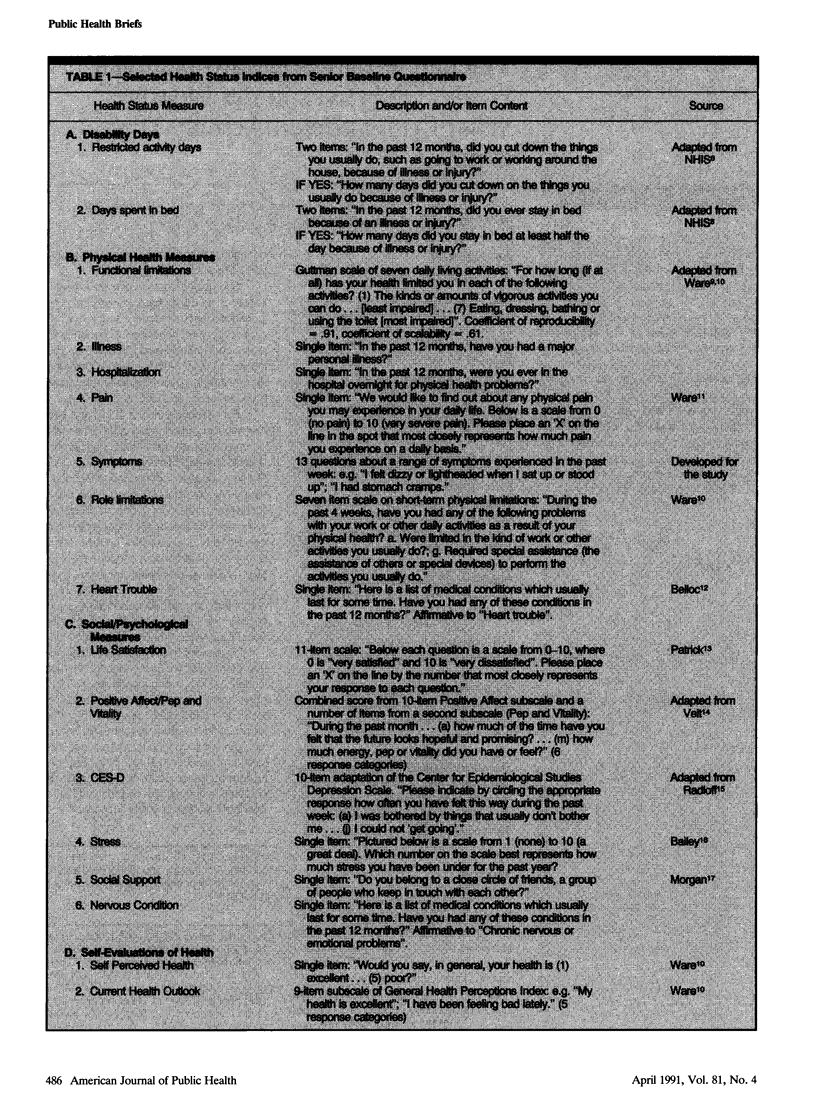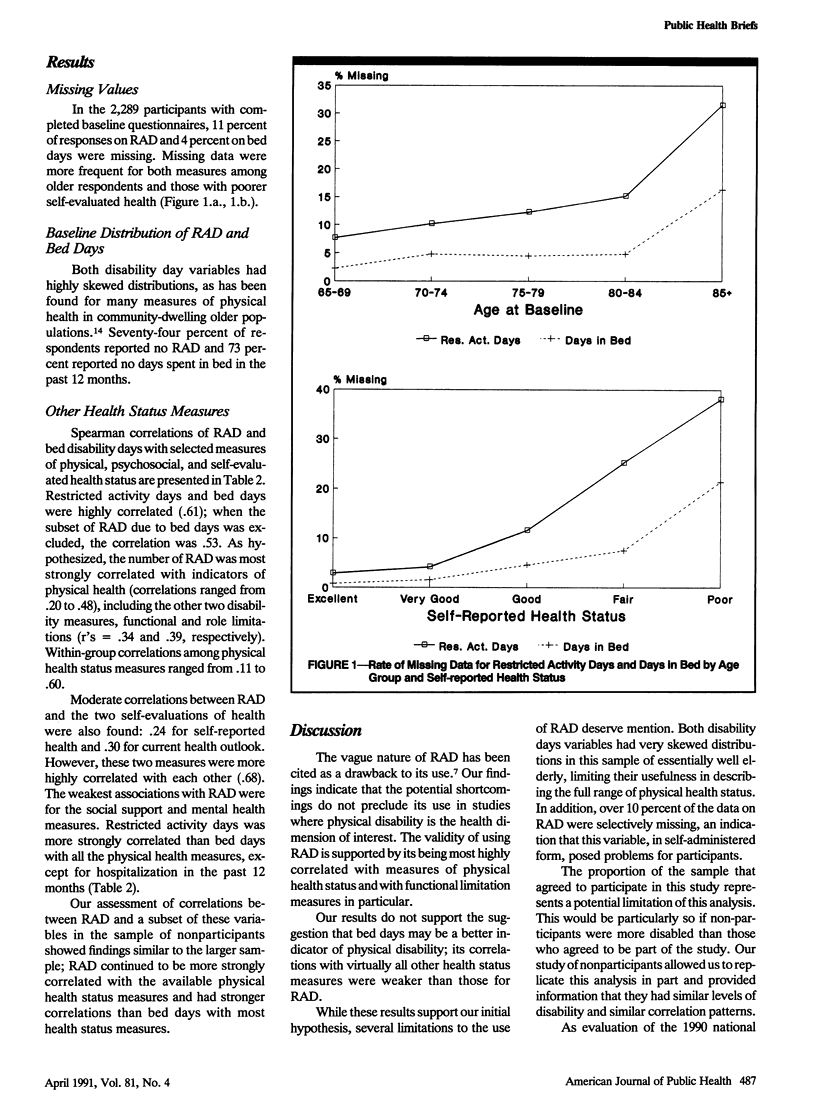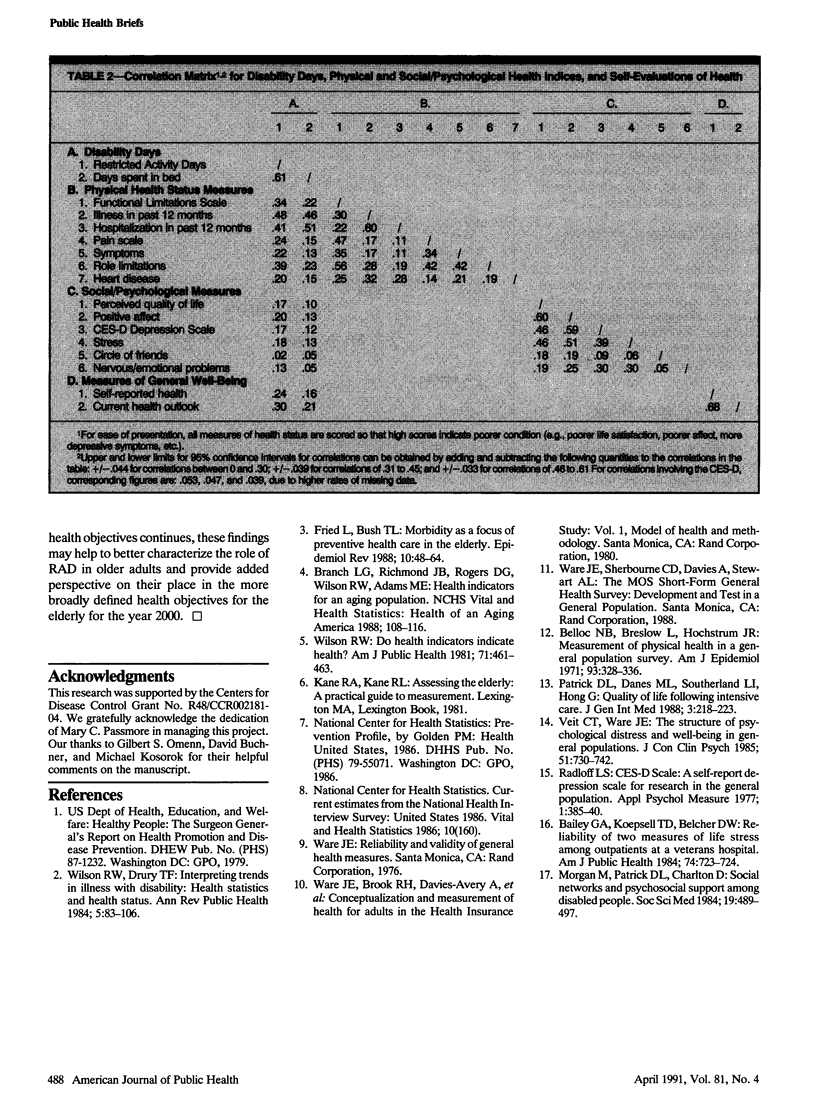Abstract
Restricted activity days is the measure by which the 1990 health objectives for prevention of functional disability in older adults will be evaluated. Yet its significance in older populations is poorly understood. We evaluated its use as an outcome measure for a randomized trial designed to impact upon physical function in elderly HMO enrollees. As predicted, restricted activity days was more correlated with physical disability measures than with other health status measures. Distributional properties and rates of missing data were shortcomings.
Full text
PDF



Selected References
These references are in PubMed. This may not be the complete list of references from this article.
- Bailey G. A., Koepsell T. D., Belcher D. W. Reliability of two measures of life stress among outpatients at a Veterans Hospital. Am J Public Health. 1984 Jul;74(7):723–724. doi: 10.2105/ajph.74.7.723. [DOI] [PMC free article] [PubMed] [Google Scholar]
- Belloc N. B., Breslow L., Hochstim J. R. Measurement of physical health in a general population survey. Am J Epidemiol. 1971 May;93(5):328–336. doi: 10.1093/oxfordjournals.aje.a121265. [DOI] [PubMed] [Google Scholar]
- Branch L. G., Richmond J. B., Rogers D. E., Wilson R. W., Adams M. M. Health indicators for an aging population. Vital Health Stat 4. 1988 Dec;(25):108–116. [PubMed] [Google Scholar]
- Fried L. P., Bush T. L. Morbidity as a focus of preventive health care in the elderly. Epidemiol Rev. 1988;10:48–64. doi: 10.1093/oxfordjournals.epirev.a036028. [DOI] [PubMed] [Google Scholar]
- Morgan M., Patrick D. L., Charlton J. R. Social networks and psychosocial support among disabled people. Soc Sci Med. 1984;19(5):489–497. doi: 10.1016/0277-9536(84)90044-3. [DOI] [PubMed] [Google Scholar]
- Patrick D. L., Danis M., Southerland L. I., Hong G. Quality of life following intensive care. J Gen Intern Med. 1988 May-Jun;3(3):218–223. doi: 10.1007/BF02596335. [DOI] [PubMed] [Google Scholar]
- Veit C. T., Ware J. E., Jr The structure of psychological distress and well-being in general populations. J Consult Clin Psychol. 1983 Oct;51(5):730–742. doi: 10.1037//0022-006x.51.5.730. [DOI] [PubMed] [Google Scholar]
- Wilson R. W., Drury T. F. Interpreting trends in illness and disability: health statistics and health status. Annu Rev Public Health. 1984;5:83–106. doi: 10.1146/annurev.pu.05.050184.000503. [DOI] [PubMed] [Google Scholar]


